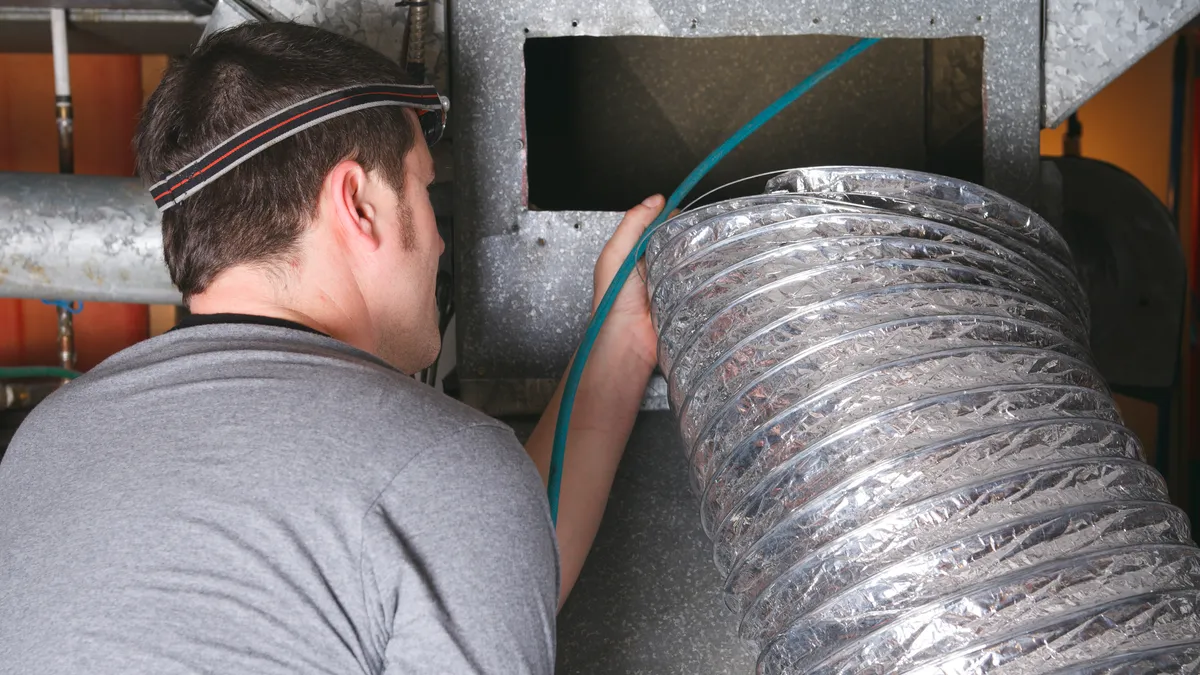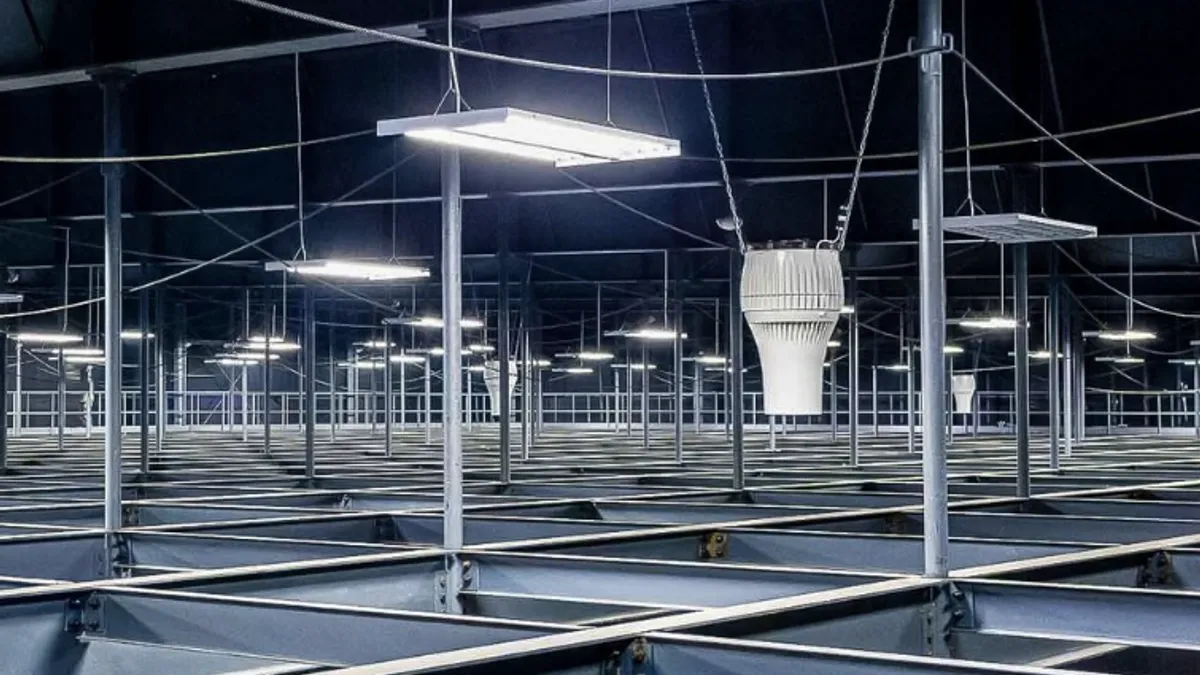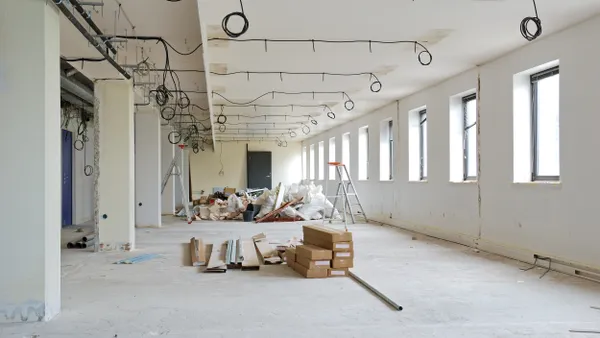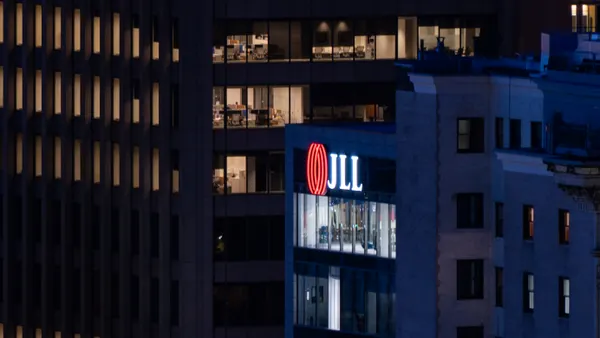Dive Brief:
- Johnson Controls reported strong sales growth for its North America building solutions segment in the second quarter of its 2024 fiscal year, led by high-teens growth in applied HVAC and controls sales.
- Sales for its North America building solutions segment rose 8% organically year over year to about $2.74 billion, with orders increasing 19% year over year, excluding mergers and acquisitions and adjusted for foreign currency, the company said in an earnings release Wednesday. On an earnings call Wednesday, Johnson Controls Executive Vice President and CFO Marc Vandiepenbeeck said continued strong demand in the data center market drove a nearly 50% growth across the company’s HVAC controls platform in North America.
- “We continue to see solid demand for our solutions, which is evident in our orders,” Johnson Controls CEO George Oliver said on the call. “This is reinforced by the fact that our fiscal [year 2024] first half orders for data centers have already surpassed the orders we booked for all of fiscal 2023.”
Dive Insight:
The applied HVAC and controls segment made up 40% of the company’s 2023 fiscal year sales and includes large commercial applied HVAC equipment, building management systems and controls. The growth in Johnson Controls’ North America building solution orders were driven by 26% and 6% year-over-year increases in systems and service orders in the region, respectively, according to the company’s earnings presentation.
“The strength of our orders in Q2 is really coming from the fundamental positive trend we are seeing in our data center business and some other core business,” Vandiepenbeeck said.
The North America building solutions segment’s backlog also increased 15% year over year to $8.9 billion, led by a 19% increase in systems and a 1% decrease in services. The segment’s adjusted earnings before interest, taxes and amortization margin expanded 110 basis points year over year to 13.6%, or $373 million, according to the presentation. This margin expansion was driven by “continued execution of high margin backlog and strength in a higher margin service business,” Vandiepenbeeck said.
The firm’s fire and security segment, comprising 37% of 2023 fiscal sales, remained flat in the quarter year over year, according to the presentation. Sustainability infrastructure sales grew by low-single digits year over year, the company said.
Oliver said data centers are a key focus area as it relates to resource deployment, and that the company has been investing in the industry “over the last few years, because we saw this coming. We are well-positioned with the cooling technologies and solutions, and a lot of that is working directly with each of the key hyperscalers and [colocation operators].”
Johnson Controls has engaged almost 100% of data center operators and is partnering with them to understand how to deploy cooling technologies at the chip-level and how these systems need to be configured to ensure that technology investments are complemented with its go-to-market strategy, Oliver said. These technologies include a range of air-cooled and water-cooled chillers that can support the exponential growth in cooling demand, Oliver noted. The company is also investing in research and development to “design, build, test and demonstrate performance of equipment over the entire data center operating envelope,” Oliver added.
“We are providing more than just chillers. As we go in with our customers, we have got strong capabilities across air handlers, as well as [computer room air handling] and now we are including the full solution, including controls, building controls, fire and security,” OIiver said.
Looking forward, the company expects single-digit growth in organic revenue, with mid-single digit growth for the full year, in line with previous guidance, according to the presentation. Johnson Controls attributed this growth expectation to strong backlog conversion, high-single-digit service growth in service and expectations of sustained performance in its global products segment through the second half of the 2024 fiscal year.
“When you look at both [global products’ applied HVAC and light commercial segments], whether it be direct or indirect, we have a much higher mix as we are differentiating our solutions [and] our commercial solutions business,” Oliver said. “When you look at the overall applied volume on a two-year stack, we're up over 20%.”
Oliver added that the company’s pipeline is extremely strong due to secular trends, including data center and industrial expansion, alongside a focus on sustainability.











